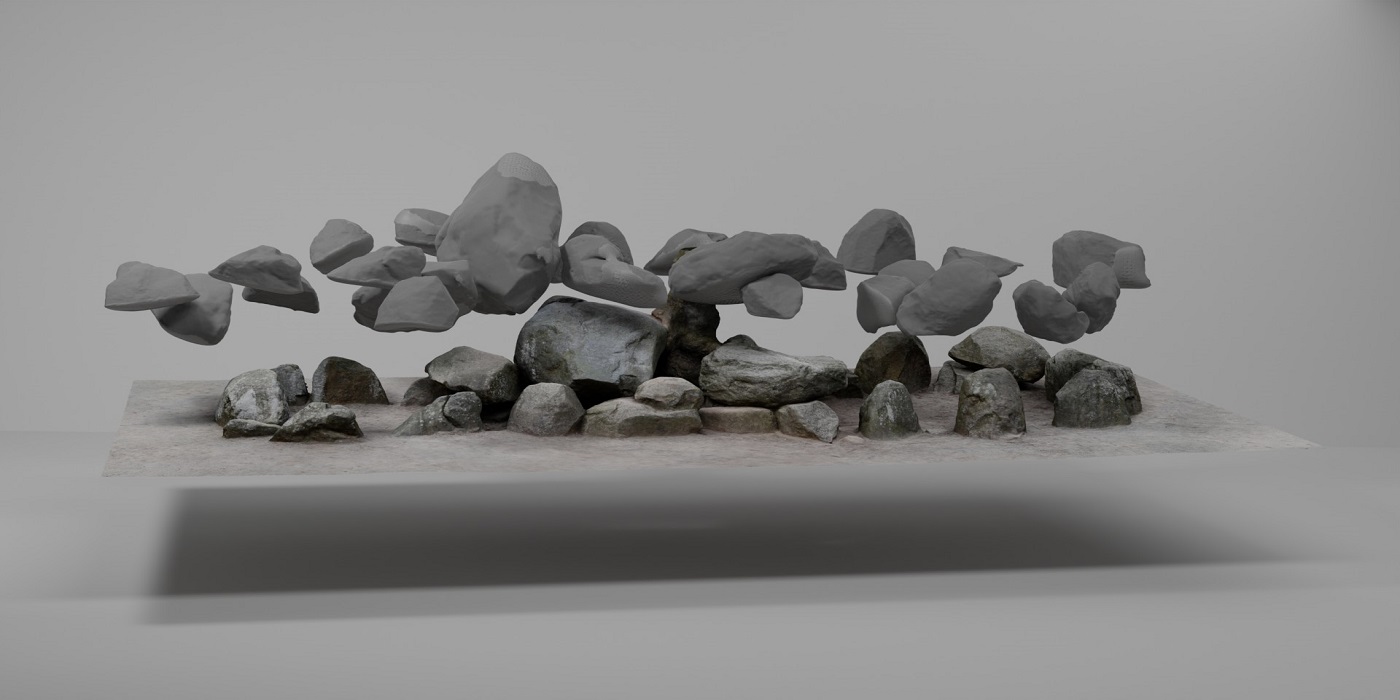
Model of the Düwelsteene before 1932 on top of how it looks today
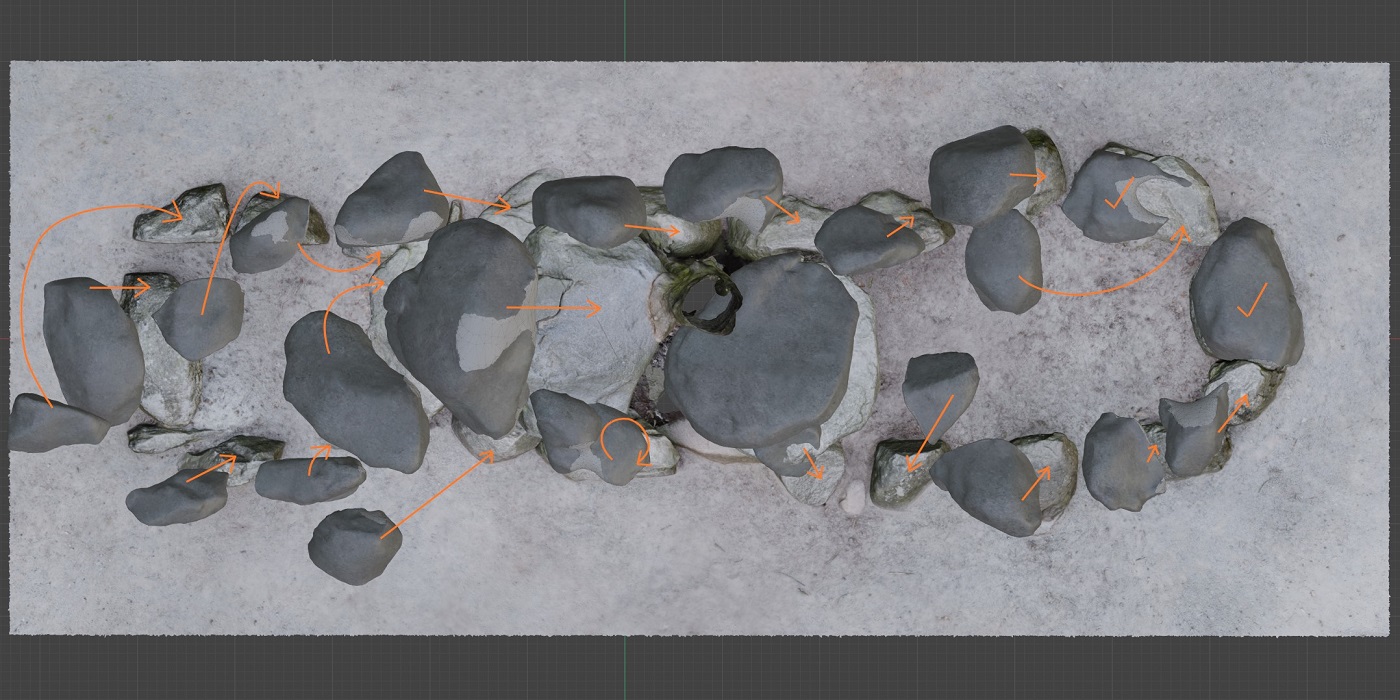
Placement changes of the megaliths from the reconstruction model of 1932 to how it looks today
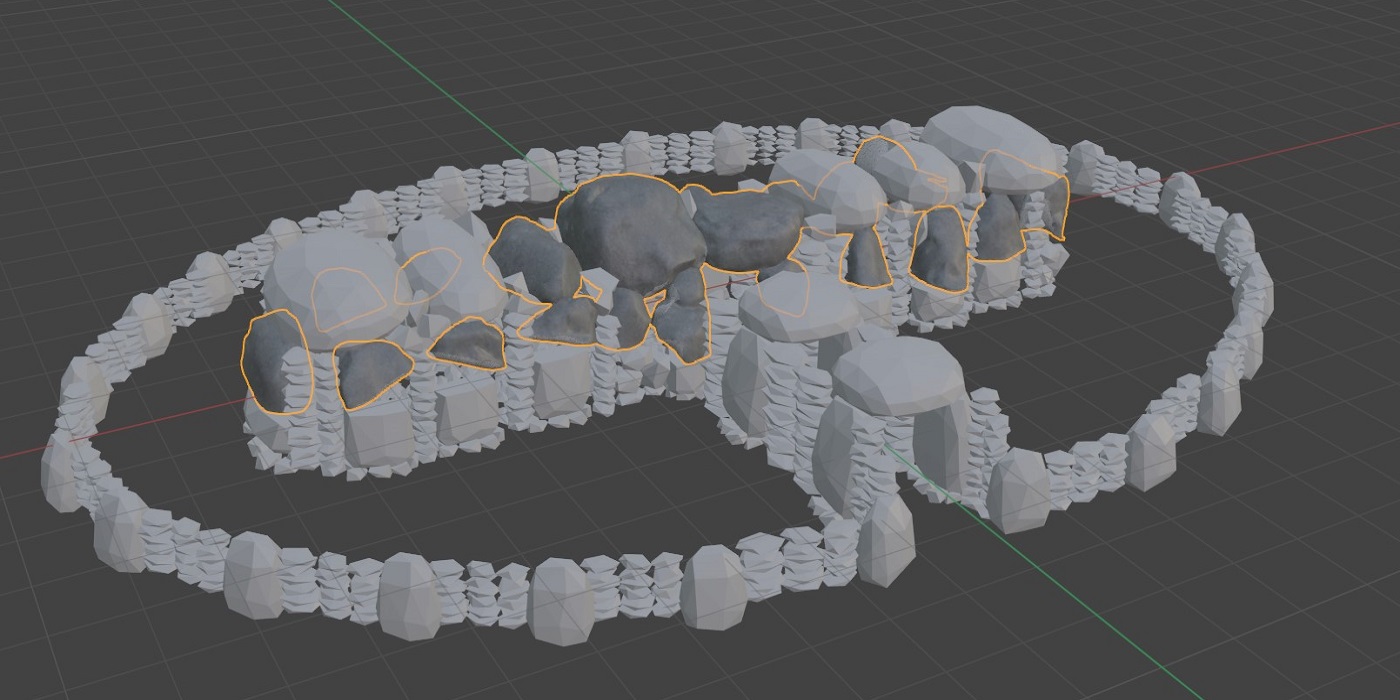




History of the Düwelsteene
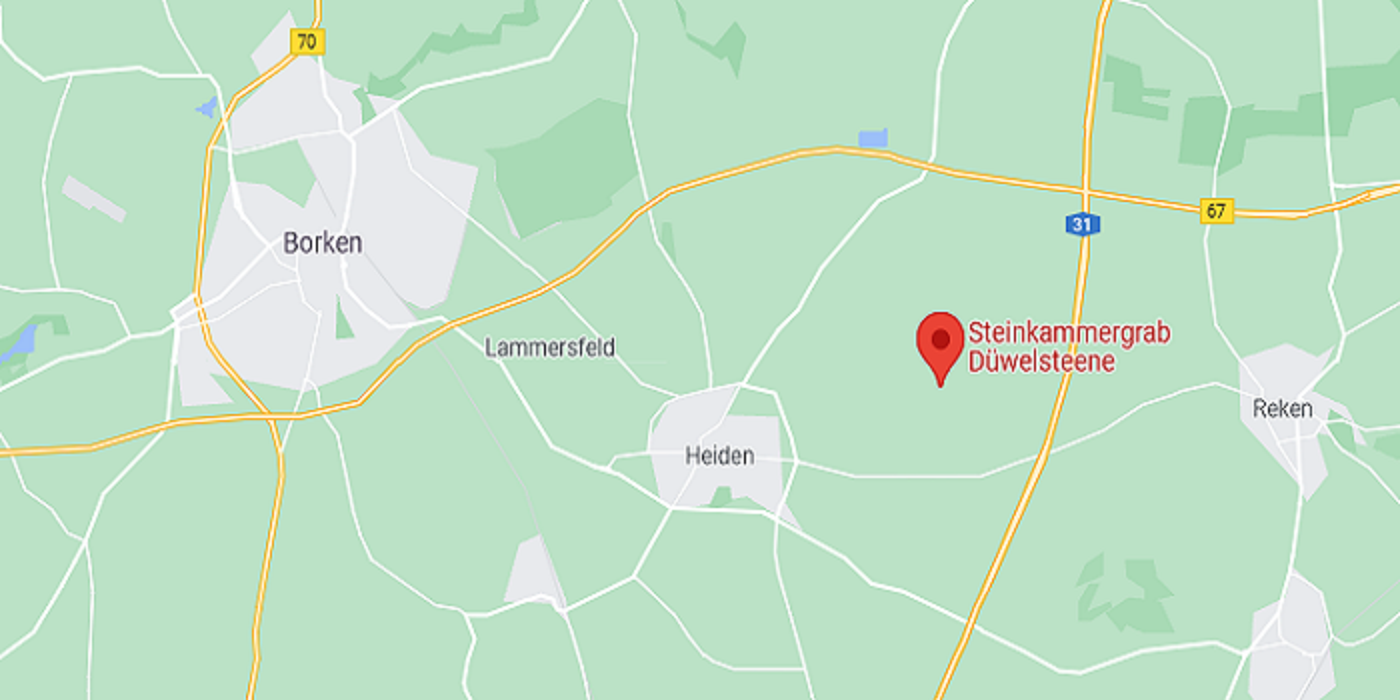
The Düwelsteene are located in the farming community Nordick and are about 3.5 kilometers away from the municipality of Heiden in an eastbound direction. The megalithic tomb can be reached by car, but also by public transport.
Via Borken (Bahnhof, Borken (West)) or via Heiden (Alter Kirchplatz, Heiden) with bus number R74 to the bus stop Höingshof, Heiden. From there it is an approximately 17 minute walk in northern direction via Salteweg and Düwelsteenweg to the megalithic grave.
Via the B67 to Heiden, from there follow the Rekener Straße, about 400 m after the roundabout there is a parking lot on the left side with a signpost to the Düwelsteene. From there on, a hiking trail leads to the megalithic stones.
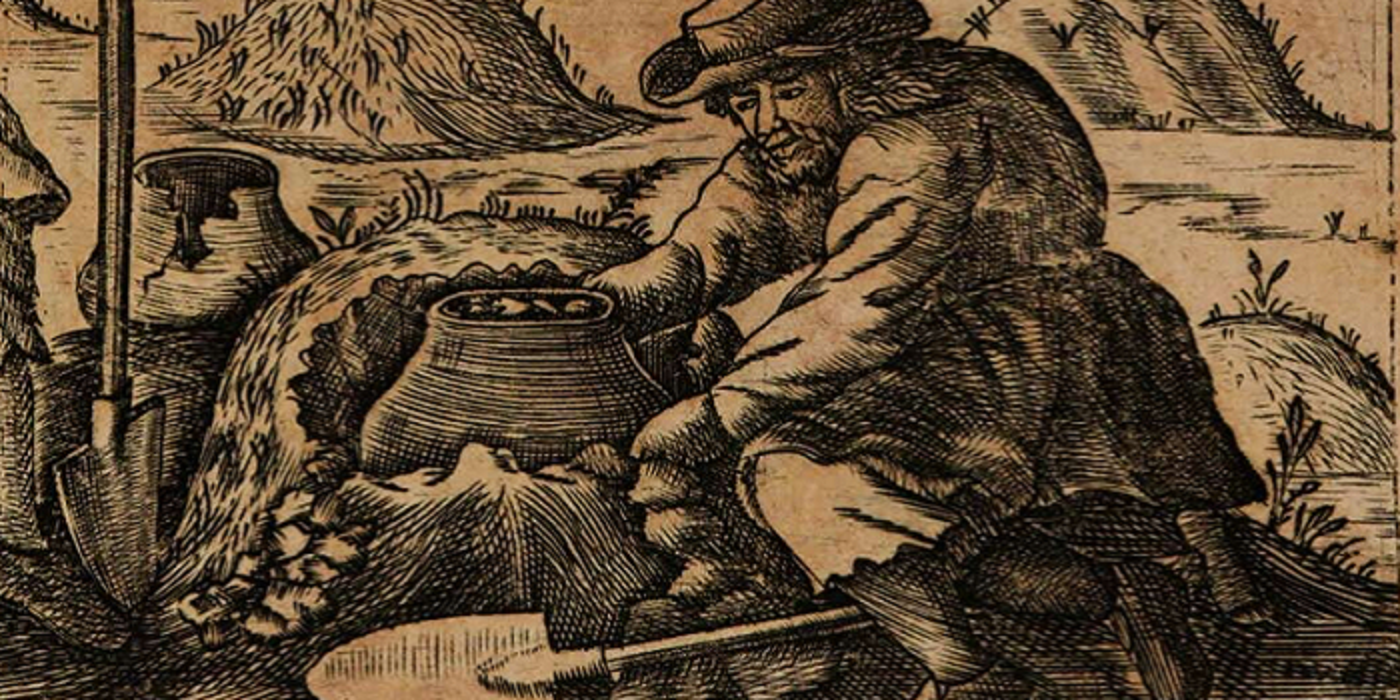
The megalithic tomb is one of the oldest prehistoric relics of the region. First evidence of excavations dates back to the early modern period and the thirst for knowledge has persisted to this day.
One of the first to carry out excavations and investigations at the Düwelsteene was Jodocus Hermann Nünning in the 18th century. In his doctoral thesis, which was published in 1714, illustrations of the megalithic tomb near Heiden, as well as drawings of ceramics can be found. However, it is not clear whether these drawings of excavation finds are from the Düwelsteene. The tomb itself was probably damaged over time by the robbery and destruction of megaliths for the extraction of building materials.

The picture is an excerpt from the doctoral thesis "Sepulcretum Westphalico-Minigardico-Gentile" by Jodocus Hermann Nünning (1714), to be found as Digital copy at the Bavarian State Library.
In the 1920s, further excavations took place at the megalithic tomb. These were carried out by the
Borkener Heimatverein, but there were no scientific investigations and no archaeological review of
the excavation work. The finds recovered at that time were transferred to the collection of the
Ruhr Museum in Essen in 1930 via the Heidener innkeeper Hugo Hinske and have been part of the
local collection ever since.
In 1932 another excavation was carried out by the Borkener Heimatverein, but the work was
archaeologically supervised by the head of the Department of Prehistory and Early
History at the Landesmuseum Münster August Stieren. After this excavation, the megalithic tomb was
then recontructed and the stones were repositioned according to the knowledge at that time.
Nowadays, the megalithic tomb and its surroundings are maintained and protected by the
municipality of Heiden. With the support of the LWL archaeology for Westphalia, information boards
were created at the megalithic grave and dangerous fractures and cracks on the megalithic stones
are repaired non-invasively if possible. Therefore, a concrete girder has been placed under one of the
boulders to support and secure the stone.
Sources:
K. Schierhold/B. Stapel, Die Düwelsteene bei Heiden, Kreis Borken. Megalithgräber in Westfalen 3
(Münster 2018)
(Link)
Die Düwelsteene bei Heiden, Webseite der Altertumskommission für Westfalen
(Link)
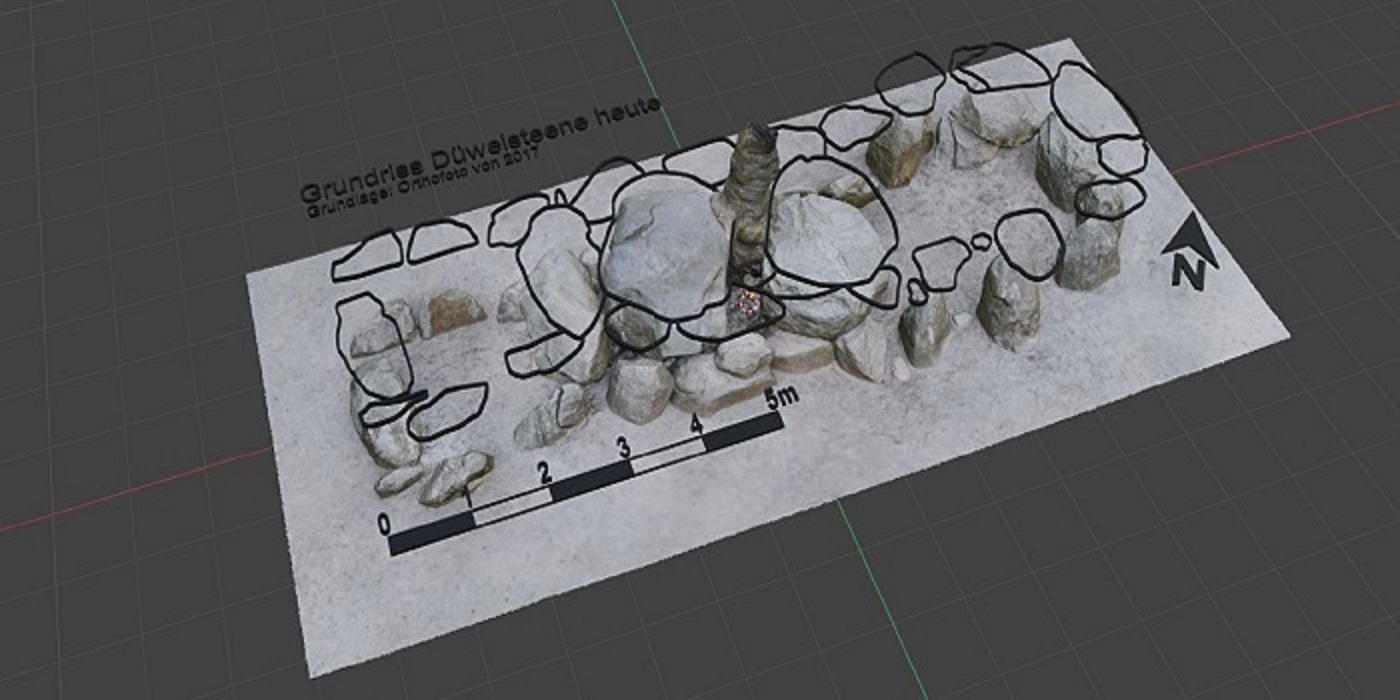
As one of the southernmost sites of a megalithic tomb of the Funnel Beaker culture in Westphalia with many surviving megalithic stones, an excavation was used in 1932 to restore the megalithic grave and to restore the stones to their then reconstructed position.
In 1932, the megalithic tomb was "restored" after archaeological excavation work. Through this reconstruction work, the megalithic tomb was restored according to the understanding at the time. The relocation of original stones and such a massive intervention in the ground monument is no longer carried out today. The reconstruction of 1932 is problematic not only because of the change in the grave structure, but also because of the lack of documentation and measurement data of the megalithic grave before the reconstruction.

3D scan of the megalithic tomb as a model in the 3D software Blender
A new reconstruction was carried out in 2020, but only digitally.
Thanks to a citizen science
project carried out by the LWL (Landschaftsverband Westfalen-Lippe), a digital reconstruction
could be created by combining 3D surveying and photographs of the grave complex before 1932, which
were submitted by Heidener residents.
The Citizen Science Project
The Düwelsteene were digitized to scale, using SfM (Structure-from-Motion) as a 3D model
by the Altertumskommission für Westfalen. With the
help of this model, the stones could be digitally "excavated" and could thus be moved freely. The
Poisson Surface Reconstruction algorithm recalculated the missing parts on the digital stones, which are still buried beneath the ground. These digital
megalithic stones could now be turned back to their original position before the restoration in
1932 on the basis of the photographs.
The virtual reconstruction
Another digital reconstruction has been created for this website. With the digital megalithic stones of the 3D scan of today's megalithic tomb and visibly differentiated 3D models of nowadays non-existent stones, the reconstruction represents the megalithic tomb as it might have looked 5000 years ago.
Sources:
K. Schierhold/B. Stapel, Die Düwelsteene bei Heiden, Kreis Borken. Megalithgräber in Westfalen 3
(Münster 2018)
(Link)
Die Düwelsteene bei Heiden, Webseite der Altertumskommission für Westfalen
(Link)
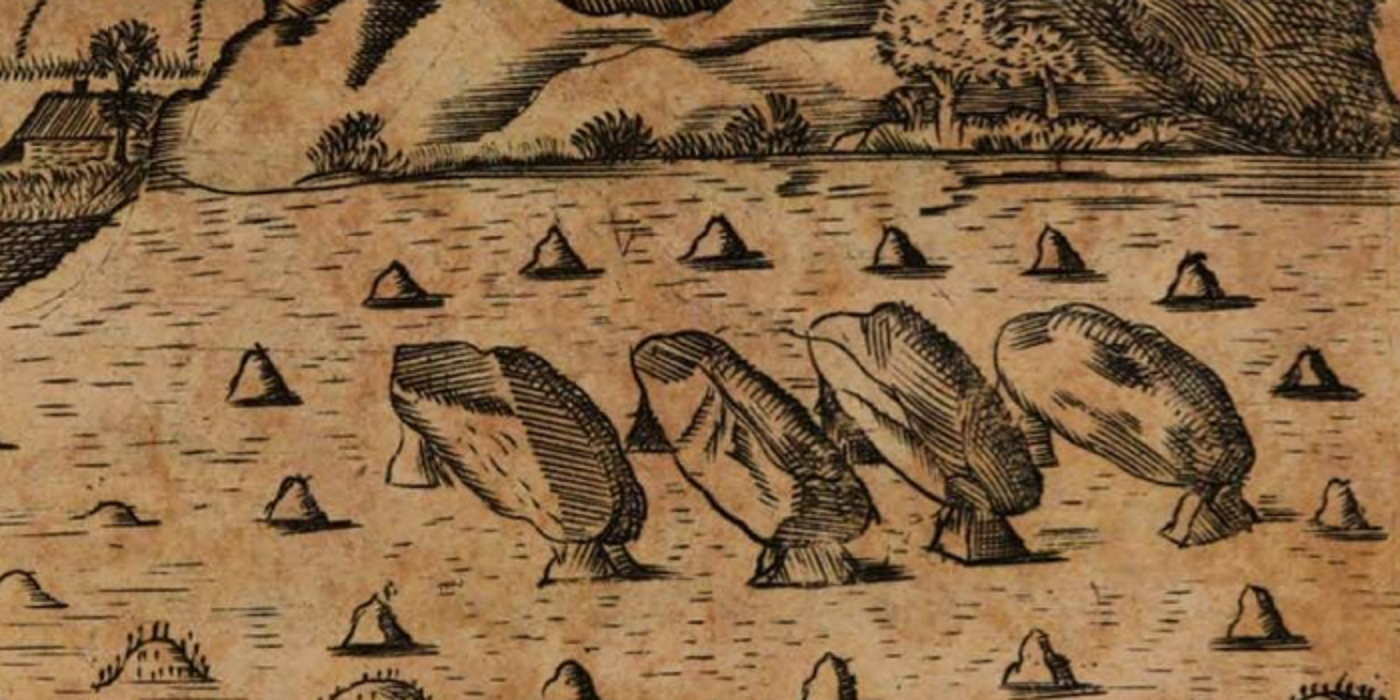
The stones not only belong to an impressive grave, they also provided stories that have been handed down to the present day. The tales try to explain the existence of the stones and provide an explanation on the origin of the name Düwelsteene.
The name "Düwelsteene" or "Devil's Stones" goes back to a folk tale. According to legend, the devil carried a sack full of large stones on his back, as he was on his way to Aachen to destroy Charlemagne's cathedral. In Heiden he met a cobbler who was carrying twelve pairs of worn shoes. When asked by the devil how far it would be to Aachen, the cobbler pointed to the shoes. The city was so far away that he had already worn all these shoes on the way from Aachen to Heiden. He had immediately recognized the devil by his cloven hoofs and could therefore deceive him with this answer. His information brought the devil, already completely exhausted from carrying the heavy stones, to angrily pour out the stones on the spot. From then on these stones were known as the Düwelsteene.

The picture is an excerpt from the doctoral thesis "Sepulcretum Westphalico-Minigardico-Gentile" by Jodocus Hermann Nünning (1714), to be found as Digital copy at the Bavarian State Library.
The first tale is often associated with other megalithic tombs, and
refers to the counting of
megalithic stones. According to the stories, it is impossible to determine the number of stones
used at the tomb. Jodocus Hermann Nünning already followed this legend about the Düwelsteenen in
the 18th century. He even tried to count the stones with the help of several participants, he
himself also tried to determine the number of stones. Even though the number of stones was often
the same, he finally had to admit: "[I] did not succeed in eradicating that popular story, because
it still exists now and still considers the stones not to be countable."
There is also the tradition that it is impossible to remove a stone from the tomb.
If this is attempted, the removed stone will be found again the next day in its original
place. Such
stories are also often found in relation to other megalithic tombs.
Sources:
K. Schierhold/B. Stapel, Die Düwelsteene bei Heiden, Kreis Borken. Megalithgräber in Westfalen 3
(Münster 2018)
(Link)
Die Düwelsteene bei Heiden, Webseite der Altertumskommission für Westfalen
(Link)